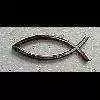-
Welcome to Celiac.com!
You have found your celiac tribe! Join us and ask questions in our forum, share your story, and connect with others.
-
Celiac.com Sponsor (A1):
Celiac.com Sponsor (A1-M):
-
Get Celiac.com Updates:Support Our Content
Challah?
-
Get Celiac.com Updates:Support Celiac.com:
-
Celiac.com Sponsor (A17):
Celiac.com Sponsor (A17):
Celiac.com Sponsors (A17-M):
-
Recent Activity
-
- Skg414228 replied to Skg414228's topic in Celiac Disease Pre-Diagnosis, Testing & Symptoms19
Does High DGP IGA Typically Mean Celiac?
Correct. I’m doing both in the same go though. Thanks for clarifying before I confused someone. I’m doing a colonoscopy for something else and then they added the endoscopy after the test. -
- trents replied to Skg414228's topic in Celiac Disease Pre-Diagnosis, Testing & Symptoms19
Does High DGP IGA Typically Mean Celiac?
It is a biopsy but it's not a colonoscopy, it's an endoscopy. -
- Skg414228 replied to Skg414228's topic in Celiac Disease Pre-Diagnosis, Testing & Symptoms19
Does High DGP IGA Typically Mean Celiac?
Well I’m going on the gluten farewell tour so they are about to find out lol. I keep saying biopsy but yeah it’s a scope and stuff. I’m a dummy but luckily my doctor is not. -
- trents replied to Skg414228's topic in Celiac Disease Pre-Diagnosis, Testing & Symptoms19
Does High DGP IGA Typically Mean Celiac?
The biopsy for celiac disease is done of the small bowel lining and in conjunction with an "upper GI" scoping called an endoscopy. A colonoscopy scopes the lower end of the intestines and can't reach up high enough to get to the small bowel. The endoscopy goes through the mouth, through the stomach and into the duodenum, which is at the upper end of the intestinal... -
- Skg414228 replied to Skg414228's topic in Celiac Disease Pre-Diagnosis, Testing & Symptoms19
Does High DGP IGA Typically Mean Celiac?
Yeah I had zero thoughts on celiac it was an ibs referral. She suspected celiac when she started questioning me and I already needed a colonoscopy which I guess is why she didn’t care that I had been fairly gluten free up to that point. Because they would have just done the biopsy when doing the colonoscopy. I don’t know we will see just figured I’d put t...
-


Recommended Posts
Archived
This topic is now archived and is closed to further replies.